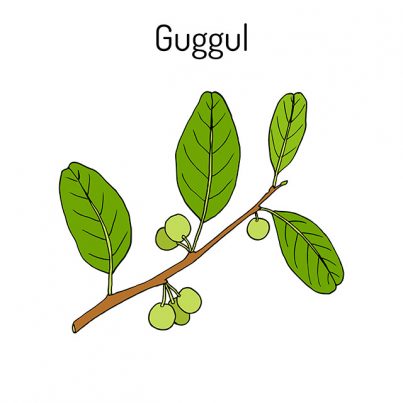
Guggul – sources, health benefits, nutrients, uses and constituents at NaturalPedia.com
Thursday, August 24, 2017 by Frances Bloomfield
http://www.naturalpedia.com/guggul-sources-health-benefits-nutrients-uses-and-constituents-at-naturalpedia-com.html

The guggul (Commiphora mukul), also known as the Mukul myrrh tree, is a small, thorny tree that is native to the arid and semi-arid areas of central Asia and northern Africa, though it’s most common in northern India. Guggul is also the name for the yellowish resinous sap extracted from the plant’s bark. This gum resin is believed to be a powerful remedy for a wide variety of health conditions and illnesses, and has been used as such by practitioners of Ayurvedic medicine for thousands of years. The name itself is a Sanskrit word that means “one that protects against diseases”, and guggul is considered to do just that well into modern times.
List of known nutrients
One of the most notable compounds in guggul is guggulsterone, a plant steroid that comes in several varieties, the most active of which are Z-guggulsterone and E-guggulsterone. These compounds are thought of as being largely responsible for the many health benefits associated with guggul, which range from cholesterol reduction to decreased oxidative stress to lowered risk of inflammation.
In addition to guggulsterone, the other known constituents of guggul include muscanone, quercetin, limonene, myrrganone A, and myrrhanol A. Like guggulsterone, these compounds have numerous positive health effects and have contributed to guggul being utilized a stimulant, antiseptic agent, antispasmodic, and demulcent, among others.
Medicinal uses for guggul
The anti-inflammatory properties of guggul make in effective in mitigating the symptoms of rheumatoid arthritis and osteoarthritis; specifically, it relieves joint pain, stiffness, and swelling. In addition, guggul reduces circulatory levels of cytokines, which are substances secreted by certain cells that can sometimes have pro-inflammatory side effects.
This anti-inflammatory quality aids the skin as well, particularly by reducing the appearance of such skin inflammations as psoriasis and acne.
Guggul has been said to lower the risk of coronary heart disease due to its ability to reduce bad or low-density lipoprotein (LDL) cholesterol, inhibit fat oxidation, and prevent arterial clogging. In fact, guggul is thought of as an effective hyperlipidemic agent for its effect on LDL cholesterol, and its ability to raise high-density lipoprotein (HDL) or good cholesterol.
Guggul is believed to assist in weight loss by activating the thyroid gland, which in turn enhances the rate of metabolism.
Body systems supported by guggul
More than just reducing acne and psoriasis, one other benefit guggul has on the skin lies in its effect on triglyceride production. By doing so, guggul helps the skin appear smoother and more supple.
Thanks to its antioxidant properties, guggul can support immune system function. Antioxidants assist in the elimination of health-depleting toxins and free radicals, which are associated with increased risk of disease.
Ways to use guggul
Traditionally, guggul is taken with many other herbs to enhance its medicinal properties. The most popular of which are yograj guggul amd kaishore guggul. Yogaraj guggul has well over 25 herbs in it and is used to treat arthritis and inflammation, while kaishore guggul is made up of four herbs and serves as an anti-aging and blood purifying agent.
Guggul can be purchased as a powder or as a tablet. Powdered guggul is often taken alongside water, milk, honey, or ghee, which is clarified butter that originates from India.
Moreover, guggul can be made into a paste for topical applications.
Where to learn more
- 6 Herbal Remedies You May Never Heard To Help You Lose Weight
- 6 Natural Herbs that Aid Weight Loss
- Herbal Medicine to Control Prostate Enlargement
- Herbal Remedies To Lose Weight Fast
- Natural Home Remedies For Acne Treatment And Prevention – Part 3
Summary
Guggul can prevent high cholesterol, inflammation, coronary heart disease, acne, and psoriasis. Furthermore, guggul can help support the skin, heart, and immune system.
Sources include:
PlanetHerbs.com
ProgressiveHealth.com
Examine.com
TheHealthSite.com
Tagged Under: Tags: Guggul






